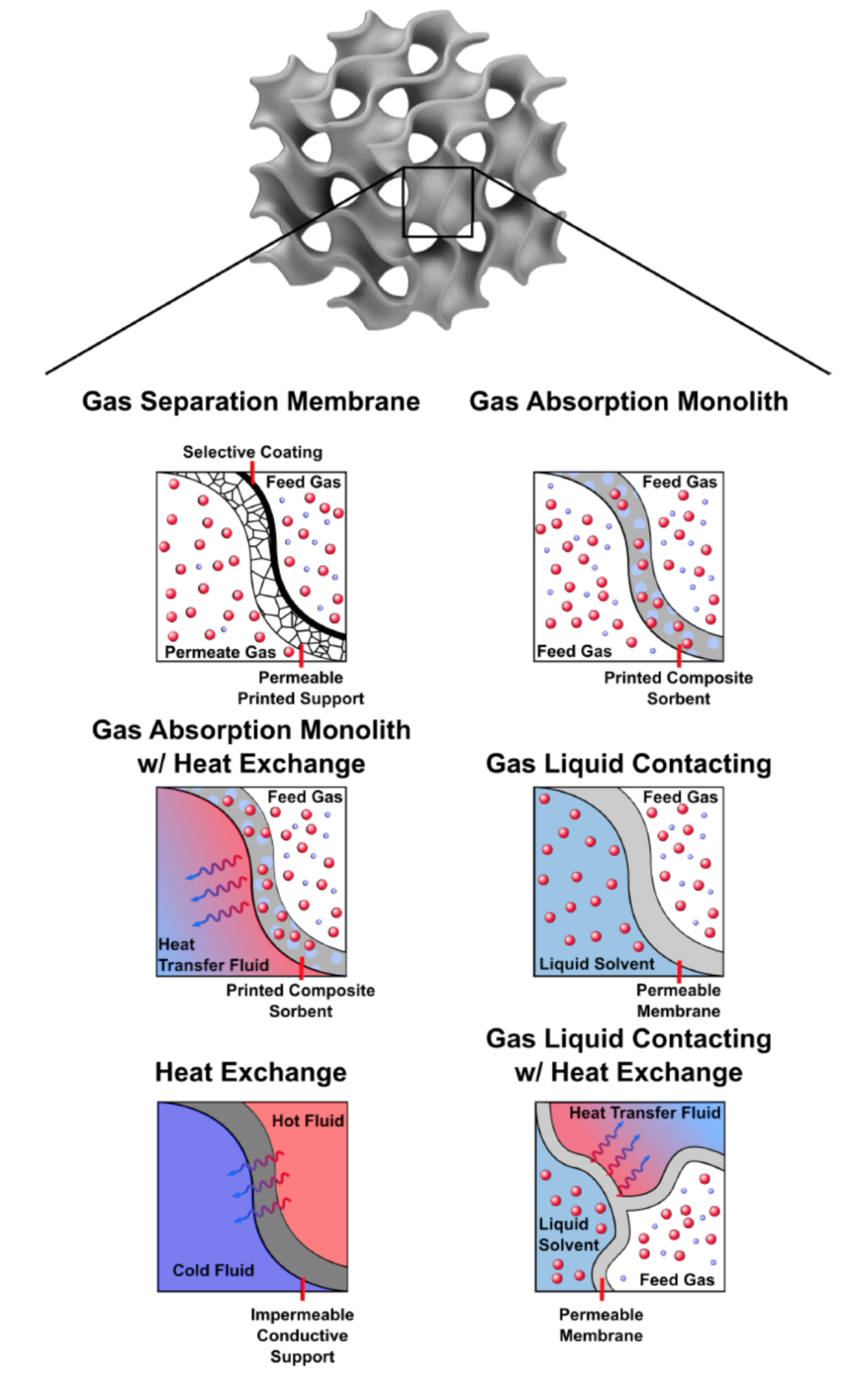A wide range of applications in energy and chemical processing would benefit from reactor designs that are more efficient in transferring mass and/or thermal energy in more compact modules with lower capital costs. One example of such a technology is a heat exchanger. Heat exchangers are an essential component of thermal energy systems, including power plants, airplanes, vehicles, building Heating, Ventilation and Air Conditioning (HVAC), and large-scale computing. Although industrial heat exchangers are perceived to be a mature technology, there is a constant push for design optimization that would improve heat transfer rate, energy efficiency, ease of maintenance, and corrosion-resistance. One promising improvement involves the use of triply periodic minimal surface (TPMS) structures, which can be fabricated using modern additive manufacturing, or 3D printing technologies.
TPMS structures exist throughout nature (e.g., biological membranes and rock crystals) and exhibit superior structural strength using a minimum amount of material. For reactor applications, these structures exhibit superior properties as compared to conventional reactor geometries (e.g., tubes and flat plates), which would translate to improved energy efficiency, reduction in pressure drop, smaller footprint, and cost savings.
For use in two-fluid flow reactors, TPMS structures would consist of two inter-penetrating fluid volume domains separated by a thin wall. The continuously turning flow paths and large interfacial areas of these structures could translate to improved energy efficiency (greater rate of heat and mass transfer) and could lead to cost-effective, smaller-sized equipment. The challenge is to develop reactor design concepts that can incorporate the unique TPMS geometries.
LLNL researchers have devised a set of design principles that facilitates the development of practical TPMS-based two fluid flow reactors.; included in the design are these new concepts:
- Gradually changing the channel size and the wall thickness over the length of the reactor. This allows the reactor to be easily connected to external fluid flows and distribute those flows into hundreds or thousands of small channels for intensive heat or mass transfer:
- Size-graded or hierarchical TPMS geometries that allow for easy fluid connections and adjustment of the interfacial area to match reaction needs.
- Thickness-graded TPMS geometries with variable wall thickness which maintain strength and structural robustness of the reactor across sections of different cell size, operating pressure, or operating temperature.
- TPMS structures which can be printed or cast in a permeable material to create membrane reactors, including gas\liquid absorption reactors.
Image Caption: Potential reactor configurations with printed TPMS scaffolds
- The innovation described is an enabling technology for a wide range TPMS-based reactors including heat exchangers.
- The unique feature of the invention is that by varying the size and shape of the TPMS cells and thickness of the cell walls continuously and seamlessly, the fluid pressure drop is minimized without sacrificing structural strength.
- Compared with other TPMS reactor designs, the design allows for more even flow and require less reactor volume and reactor material.
- Reduction in capital cost.
- Heat exchangers for power generation, chemical manufacturing, oil and gas, transportation and HVAC
- Carbon Capture
- Dialysis membranes
- Energy Storage Electrode Designs
Current stage of technology development: TRL 2
LLNL has patent(s) on this invention.
U.S. Patent No. 11389765 Hierarchical Triply Periodic Minimal Surface Structures As Heat Exchangers And Reactors published 7/19/2022
U.S. Patent Application No. 2022/0003503 Systems And Methods For Periodic Nodal Surface Based Reactors, Distributors, Contactors And Heat Exchangers published 1/6/2022


